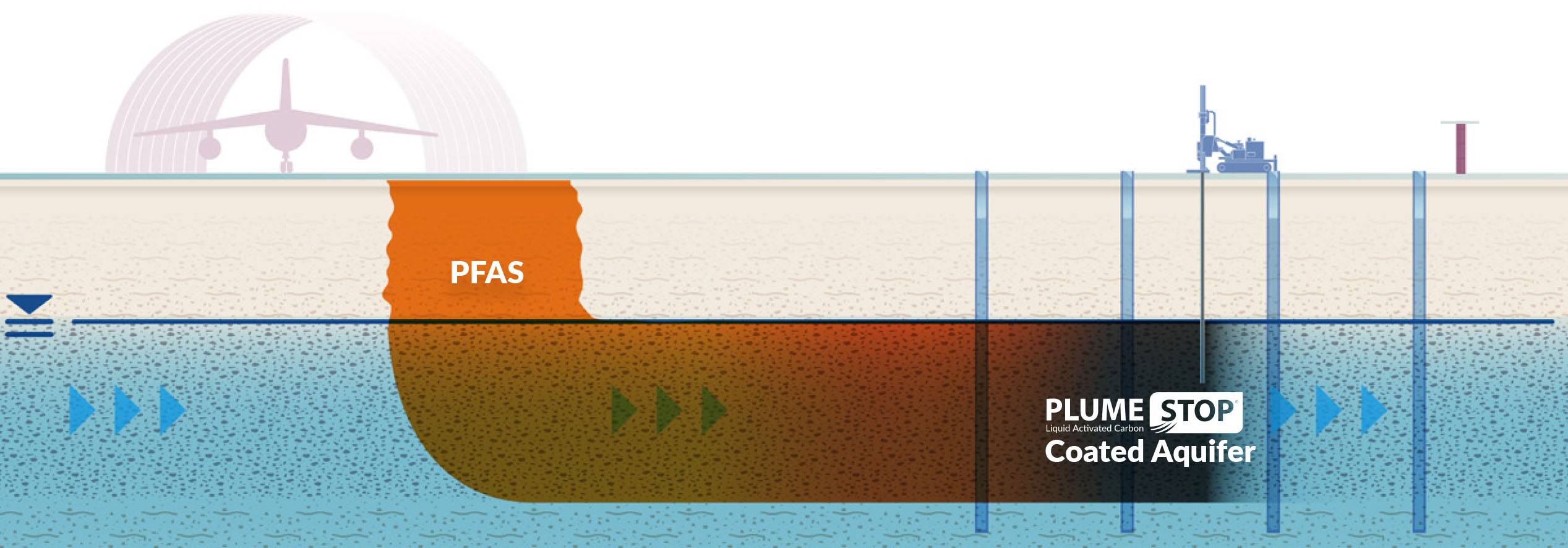The Importance of PFAS Treatment in Restoring Contaminated Water
The Importance of PFAS Treatment in Restoring Contaminated Water
Blog Article
Just How PFAS Treatment Ensures Clean and Lasting Water
The visibility of PFAS, generally understood as "permanently chemicals," poses considerable challenges to water high quality and public wellness. The ramifications of these treatments prolong beyond prompt wellness benefits; they elevate essential questions regarding lasting water management techniques that have to be dealt with to ensure a resistant future.

Comprehending PFAS Contamination
PFAS, or per- and polyfluoroalkyl compounds, have emerged as a substantial ecological worry as a result of their widespread frequency and persistence in the environment. These synthetic chemicals have been utilized in numerous commercial applications and consumer products, including non-stick pots and pans, water resistant clothes, and food packaging, as a result of their unique buildings such as water and grease resistance.
The contamination of soil and water sources by PFAS occurs mainly through commercial discharges, firefighting foam usage, and seeping from garbage dumps. pfas management. As soon as launched, these compounds are resistant to destruction, leading to their buildup in the setting. This perseverance increases crucial problems, as PFAS can take a trip long ranges with groundwater and surface area water supply, influencing alcohol consumption water supplies and environments

Wellness Threats of PFAS
The determination of PFAS in the atmosphere raises substantial wellness problems for individuals revealed to these substances. Research has actually linked PFAS direct exposure to numerous adverse wellness impacts, consisting of immune system dysfunction, liver damages, and enhanced danger of certain cancers cells.
The universality of PFAS in consumer products, such as non-stick cookware, water-repellent fabrics, and food product packaging, additional amplifies the danger of direct exposure. Drinking water polluted with PFAS is a significant concern, as these chemicals can seep into groundwater sources. Vulnerable populaces, consisting of kids and those living near commercial sites, may face elevated threats due to their creating systems and potential for higher direct exposure degrees.
As understanding of these health and wellness threats proceeds to grow, regulatory agencies are beginning to establish standards for PFAS levels in alcohol consumption water. Public wellness efforts are important to reduce exposure and safeguard communities from the long-term impacts of these hazardous substances.

Innovative Therapy Technologies
Exactly how can we effectively take on the challenges positioned by PFAS contamination in water sources? Innovative treatment modern visit our website technologies are arising as essential remedies in the mission for tidy water. These methods concentrate on the elimination or damage of per- and polyfluoroalkyl compounds (PFAS), which are notorious for their persistence in the atmosphere.
One appealing strategy is adsorption using innovative materials, such as triggered carbon and ion exchange materials. These products have revealed effectiveness in capturing PFAS molecules from water. Another noteworthy innovation is membrane layer filtering, which utilizes nanofiltration and reverse osmosis to different contaminants at the molecular level, thus providing an obstacle against PFAS.
Furthermore, progressed oxidation procedures (AOPs) employ solid oxidants to damage down PFAS substances right into harmless by-products. This approach is especially effective for dealing with extremely infected water resources. Bioremediation strategies, using particular bacteria, are likewise being checked out to break down PFAS.
As research continues, hybrid systems that incorporate several modern technologies might supply enhanced efficiency, attending to the complexities of PFAS contamination. The advancement and application of these cutting-edge therapy technologies are crucial actions toward guaranteeing the security and sustainability of our water resources.
Benefits of Efficient PFAS Therapy
Effectively treating PFAS contamination in water resources substantially boosts public wellness and ecological security. PFAS, commonly described as "forever chemicals," are resistant to destruction and can collect in the body, leading to significant health and wellness risks such as cancer, liver damages, and body immune system dysfunction. By implementing efficient therapy approaches, neighborhoods can decrease exposure to these hazardous substances, inevitably boosting the wellness end results of their populaces.
Moreover, successful PFAS therapy adds to the conservation of local ecosystems. Polluted water can adversely influence water life and interfere with the fragile equilibrium of neighborhood habitats. By making sure clean water, therapy procedures secure biodiversity and preserve eco-friendly integrity.
Additionally, efficient PFAS removal can promote public confidence in water high quality. When neighborhoods are ensured that browse around here their alcohol consumption water is totally free from harmful pollutants, it advertises a feeling of safety and security and well-being. This trust is crucial for community interaction and assistance for recurring water management efforts.
Future of Water Sustainability
In the middle of growing concerns regarding water top quality and scarcity, the future of water sustainability depends upon ingenious techniques and joint initiatives. As neighborhoods face the impending hazards of contaminants like PFAS, the development of sophisticated treatment innovations is important. These technologies not only concentrate on the removal of dangerous compounds but additionally advertise the reuse and recycling of water, therefore lowering total need.
Additionally, efficient water administration plays a critical duty in making certain lasting techniques. Policymakers should integrate scientific study with governing structures to establish clear guidelines for water use and therapy. Stakeholder interaction, including neighborhood areas and markets, fosters a feeling of common obligation and urges sustainable practices throughout numerous industries.
Financial investment in infrastructure is also critical; updating aging systems to incorporate contemporary filtering and purification techniques can substantially improve water high quality. Embracing environment-friendly innovations, such as natural purification systems, can offer green options.
Eventually, the future of water sustainability depends on an all natural technique that incorporates modern technology, plan, and area participation. By prioritizing these components, we can guard our water sources for generations ahead, making sure clean and Your Domain Name lasting water for all.
Final Thought
In conclusion, the effective treatment of PFAS is important for guaranteeing clean and sustainable water. Ultimately, robust PFAS treatment techniques contribute to long-term resilience in water management, cultivating public trust fund in water top quality and advertising lasting practices.
Report this page